Getting a cat to sleep in its bed depends on a cat’s individual preferences. It requires a lot of patience, consistent efforts, encouragement, and some trial and error.
A cat bed is a sleeping area for your cat that offers comfort and a secure resting place. Cat beds come in various shapes, sizes, and styles and can be made of soft, plush materials, memory foam, or orthopedic fabric. Cat beds can be open or closed with raised edges or a donut shape to give a sense of security to the cat. A good cat bed must be washable, durable, and feature a non-slip base to stop it from sliding around when the cat moves.
Cats are polyphasic sleepers, meaning they nap multiple times throughout the day. Healthy, adult cats generally sleep for 12 to 16 hours every day, while kittens and senior cats tend to sleep even more, sometimes up to 20 hours daily. Sleep enables your cat’s body tissues to repair and regenerate, bolstering the animal’s immune system. So, if your cat doesn’t get enough sleep, she will be at risk of many health problems.
A comfortable, cozy cat bed is important for various reasons. First, a cat bed provides a comfortable, secure resting spot for your cat, helping to prevent stress, which is crucial for your pet’s health. In addition, a cat bed can help prevent damage to your furnishings since the cat won’t scratch to mark her regular sleeping spot.
If your cat doesn’t have her own bed to rest in, you must read this guide to learn about the benefits of cat beds, how to choose one, and how to make a DIY crib for your kitty!
Do Cats Need Beds?
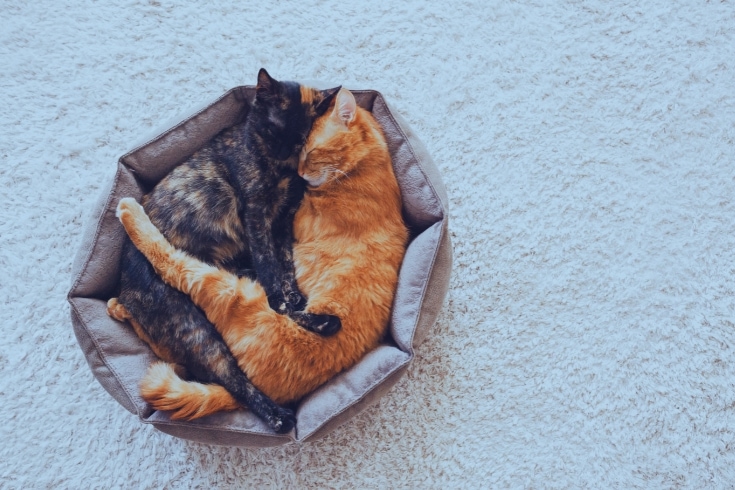
Yes, cats need beds for many reasons, but especially for their long-term health. To understand why sleep is so important for your cat, you must know more about cat sleeping patterns.
Cats are polyphasic sleepers, meaning they sleep, or catnap, multiple times throughout the day. Compare that with monophasic sleepers like you and I, who typically have one main sleep period per 24-hour cycle. Adult cats generally sleep for between 12 and 16 hours every day, while kittens and senior cats sleep more than that, sometimes as much as 20 hours in one day.
Cats experience both light and deep sleep phases. During a light sleep phase, your cat is still alert to her surroundings, so you will often see her ears twitching or rotating toward noises even though she appears to be asleep. When your cat is in deep sleep, she experiences Rapid Eye Movement (REM) sleep, which is when she dreams, and you might see your cat twitching or moving her paws as though she’s chasing something in her dream.
Cats are crepuscular, being most active at dawn and dusk. That’s a throwback to their wild ancestors who hunted at those times when more prey animals were around. So, don’t be surprised if your kitty is especially lively or hunt-driven early in the morning or in the late evening. Your cat’s habit of sleeping throughout the day is also instinctual. Think of a lion or leopard in the wild, sleeping during the heat of the day to conserve energy for hunting, and you can see where that habit in domestic cats comes from.
To guarantee your cat the relaxing rest she needs, you need to know how to choose the best beds for cats of all ages and their benefits. Keep reading to find out!
What Are The Benefits Of Providing A Bed For Your Cat?
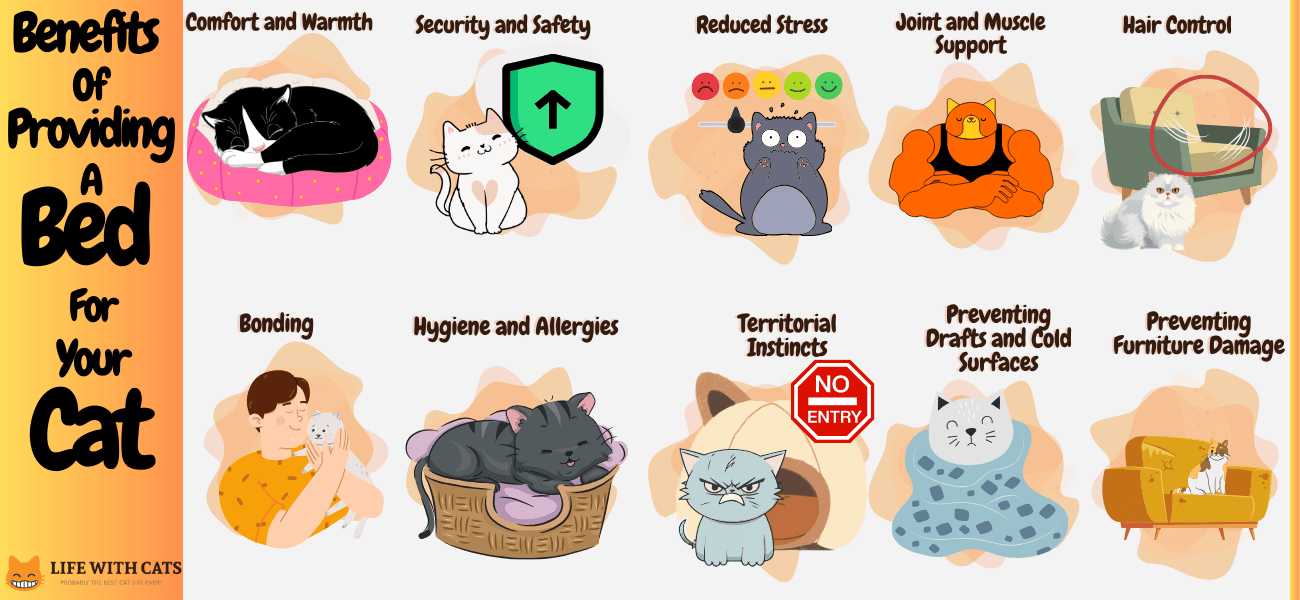
The benefits of providing a bed for your cat are sometimes obvious, especially if you prefer not to have your cat in bed with you! But there are a few advantages to cat beds that might surprise you!
Comfort And Warmth
The first and most obvious benefit of providing a bed for your cat is the comfort and warmth that the bed offers. Cats love to be warm and cozy, and the vast majority of cat bedding on sale is designed to provide your pet with exactly that.
Did you know that the surface temperature of a typical cat bed is usually between 10 and 15 degrees above the ambient room temperature? That’s why your cat loves nothing more than to snuggle up inside a fluffy bed on a chilly afternoon!
Security And Safety
A comfortable enclosed bed can give your cat a feeling of security and safety, helping her relax and remain stress-free in your home. That’s especially important if you move home or put your cat in a boarding facility while you’re on vacation.
Reduced Stress
Stress is a big problem for cats because it causes the immune system to be compromised, leaving your cat at risk of infection and diseases. Chronic stress can cause serious health problems, including high blood pressure, as well as behavioral issues.
A comfortable cat bed helps to reduce stress by giving your cat that feeling of security and safety she craves.
Joint And Muscle Support
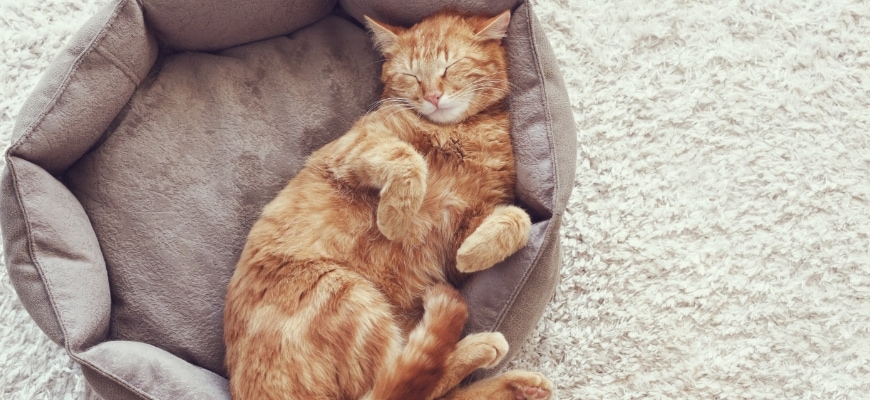
Senior cats can be prone to joint pain caused by arthritis, and a memory foam or orthopedic cat bed can provide invaluable joint and muscle support for them. Similarly, cats recovering from trauma or surgery can benefit from the joint and muscle support a good quality cat bed can provide.
Hair Control
Most cats shed to some degree, but long-haired varieties lose much more hair than short-coated breeds. Rather than having your home upholstered in cat hair, you can provide your pet with her own bed to sleep in. That way, any loose hair is more likely to finish up in the bed, which you can then vacuum and wash.
Of course, brushing your cat a couple of times a week will help keep shedding to a minimum and help build a closer bond between you and your pet.
Hygiene And Allergies
Cats are generally clean animals that don’t tend to come home covered in mud after an adventure outside your backyard. However, your kitty might come home with grubby paws, and a bed can help to keep the dirt in one place, making it easier to clean up.
If you have pet allergy sufferers in your household, trapping as much cat dander and loose hair as possible in a cat bed can help prevent triggering a reaction, especially if you wash the bed once a week.
Territorial Instincts
Cats are highly territorial creatures that feel most secure and safe when they’ve marked their territory.
When your cat has her own dedicated bed, she will mark it by rubbing her face against the fabric and scratching it, using the scent glands in her paws and face. That way, your kitty knows the bed is hers and will instinctively gravitate to it.
Preventing Furniture Damage
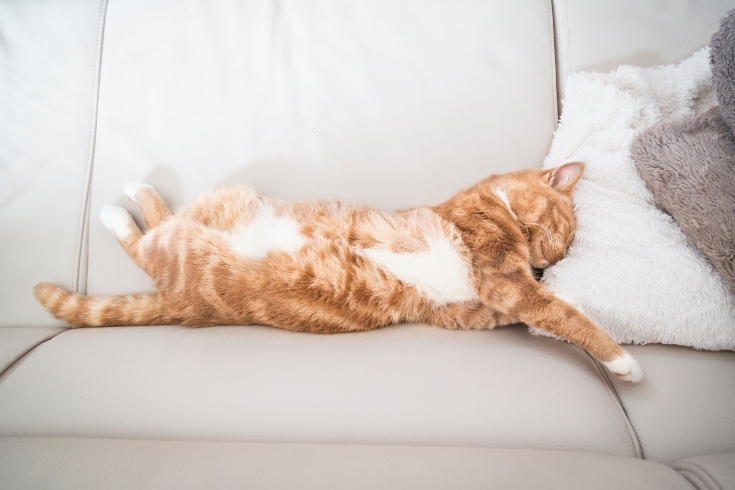
If your cat sleeps on your fabric sofa, there’s a good chance it will eventually become stained with everyday dirt and the grease in your cat’s coat. In addition, cats use the scent glands in their paws to mark their territory during scratching, and you don’t want your furniture to sustain damage from your cat’s claws.
So, as well as providing your cat with a scratching post and training her how to use it, you should buy a comfy, cozy bed your cat can take ownership of and save your sofa!
Bonding
Providing your cat with her very own bed that she loves can be an excellent way of bonding with your pet, and your pampered pussycat will certainly appreciate the beautiful, soft, comforting space you have created for her!
Preventing Drafts And Cold Surfaces
As previously mentioned, cats seek out warm, cozy spaces to sleep and will go out of their way to avoid drafty, cold surfaces. So, by providing your cat with a warm, comfortable bed, you’ll definitely be racking up plenty of Brownie points!
What Makes A Good Cat Bed?
Choosing the right bed for your cat is absolutely critical if your pet is going to use it. Cats can be quite fussy when it comes to their sleeping arrangements, and it might take some trial and error to work out what kind of bed your cat likes the best.
So, to give you a headstart, in this part of our guide, we explain what to look for in a good cat bed.
Comfort
The first thing to look for when choosing a cat bed for your feline friend is comfort. The bed should be made from a warm fabric that your kitty can snuggle into and it must be thick enough that it doesn’t allow any drafts or cold to seep in from a tiled floor beneath.
Size
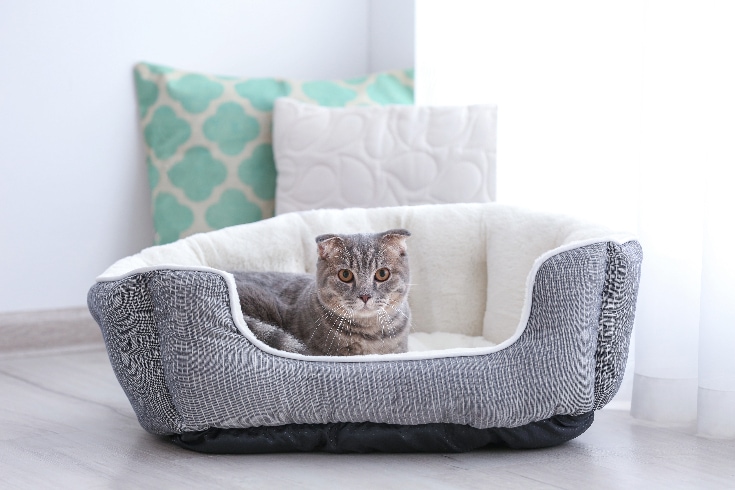
The bed should be the right size for your cat. If it’s too small, your cat won’t be able to comfortably fit into the bed, and if the bed is too big, your pet won’t get the secure, safe feeling of being enclosed in a snug safety zone.
Style
There are lots of different cat bed styles, which we discuss in more detail later in this guide. Some cats love a donut-shaped bed they can curl up in, while others prefer an igloo-style bed that offers a dark den-like space in which to sleep. It’s up to you to work out what bed style your pet prefers, and that could take some trial and error!
Washable
Ideally, you want a washable cat bed you can pop in your washing machine and freshen up every couple of weeks, ensuring both hygiene and long-lasting comfort for your feline friend.
Durability
High-quality cat beds can be quite expensive, so the last thing you want is for your brand-new cat bed to fall apart a few days after you get it! Generally, you get what you pay for, so always buy the best quality cat bed you can afford, even if that stretches your budget.
Non-Slip Base
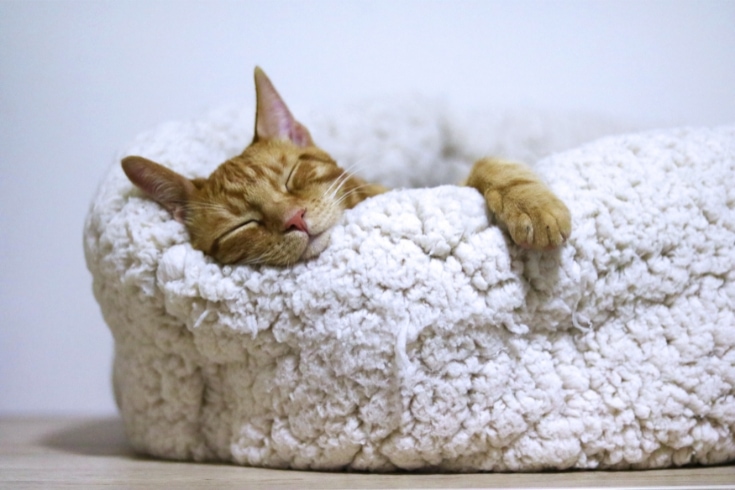
Look for a cat bed with a non-slip base that won’t shoot out from underneath your cat when she gets in and out of it. These beds are generally washable too, but check the label on the product to be sure about that before you part with your cash.
Temperature Regulation
If you live in a very warm climate, there is a danger of your cat overheating. You can buy special cool mats that help to regulate the bed’s temperature, which can protect your cat in the event of a heatwave. On the other hand, if you live in a region where the winters are very cold, you might want to consider buying a heated cat bed to keep your kitty toasty warm on frosty nights.
Height
If you have a kitten or a senior cat with mobility issues, don’t buy a tall cat bed that she’ll struggle to get into and out of. Also, some igloo-style beds can stand quite tall and might not fit comfortably in the spot you’ve earmarked for them.
Location
Similarly, remember to measure the space you’ve allocated for your cat’s new bed to be sure it will fit comfortably with plenty of space for the cat to get in and out.
Multiple Beds
If you have a multi-cat household, you’ll need multiple beds to provide each cat with her own space. That can prevent territorial squabbles from breaking out between housemates, making for a more harmonious household.
In addition, if you have just one cat, you might want to provide multiple beds for her if she has several favorite resting spots around your home.
Scent And Familiarity
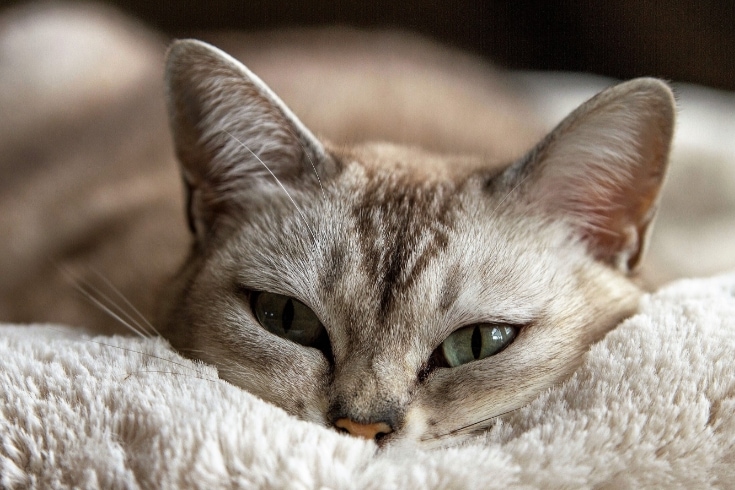
A good cat bed will be familiar to your cat and will carry her scent.
Of course, that won’t be the case with a brand-new bed you just brought home from the store, but you can put a familiar toy or an old blanket in the bed to transfer your pet’s scent.
Budget
There’s a massive range of cat beds designed to cater to different feline needs and to fit all budgets. However, it’s important to remember that the price of the bed usually reflects its quality, so bear that in mind when choosing a bed for your princess pussycat.
What Are The Different Types Of Cat Beds?
Types of cat beds you can choose from are many and varied. As mentioned already, not every bed suits every cat, so you might need to try out a few different options to find the best bed for the cats in your life.
Here’s an overview of the different types of cat beds you can buy, including the best kitten bed and options for seniors.
Open Cushion Beds
Open cushion cat beds are simple, flat beds without raised edges, providing a soft, plush surface for the cat to rest on.
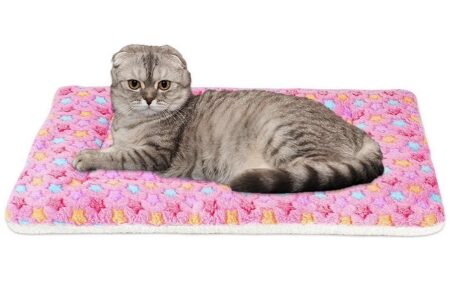
Enclosed Cave Beds
This style of bed is also sometimes called “cat caves” or “igloos.” These are covered beds designed for your cat to snuggle inside, giving a sense of privacy, security, and protection.
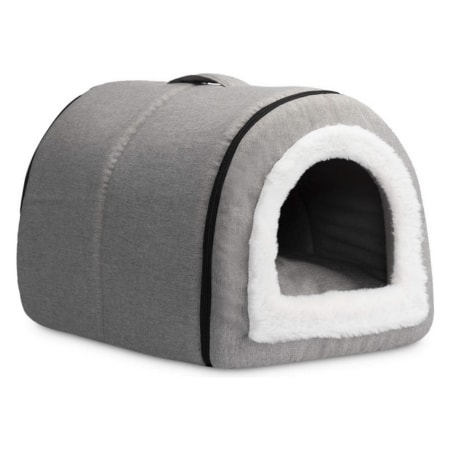
Donut Or Bolster Beds
Donut or bolster beds are characterized by their raised edges and circular design. These beds are especially popular with cats who like to curl up into a ball when they sleep.
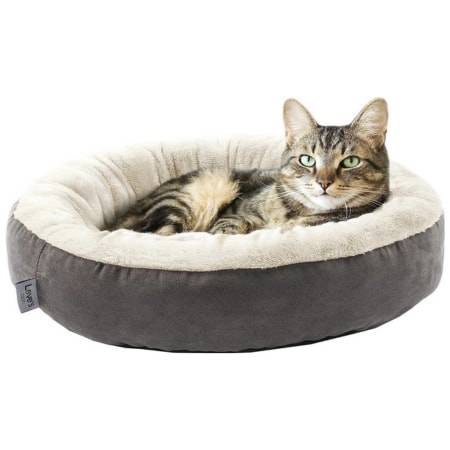
Heated Beds
These beds have built-in heating elements to provide warmth. Some are electric while others are microwaveable. Heated beds are perfect for senior cats, short-haired breeds, or cats who live in cold environments.
Window Perch Beds
As the name suggests, these beds are designed to fix to windows, usually via suction cups. Perfect for indoor cats, a window perch bed offers your cat a perch from which she can enjoy watching the world go by outside from the safety of your living room.
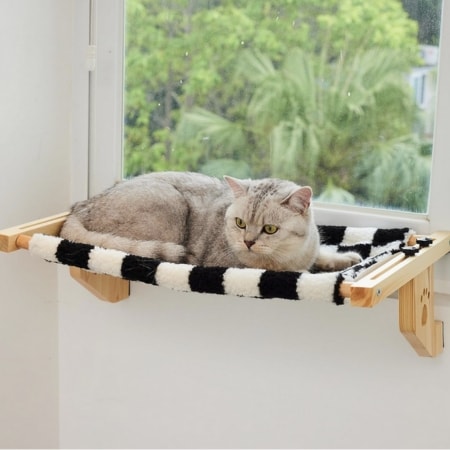
Hammock Beds
Hammock cat beds are designed to be suspended above the ground. Many cats enjoy the floating sensation and the way the bed sways slightly, apparently finding it comforting and relaxing.
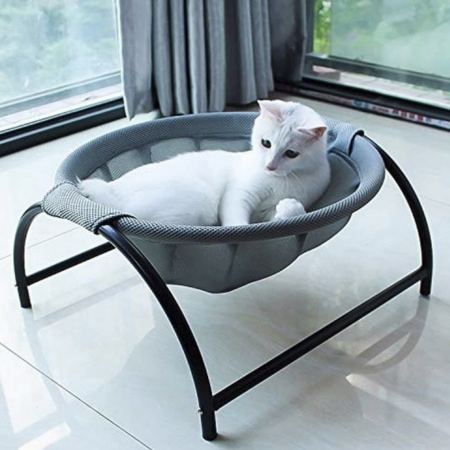
Orthopedic Beds
These beds are designed to provide extra joint and muscle support for cats with arthritis and other joint issues and are typically made from memory foam or something similar.
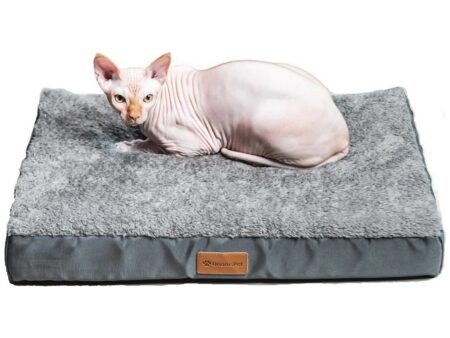
Elevated Beds
These beds are raised off the ground, usually on legs or on a platform and are designed to allow excellent air circulation underneath. If you live in a hot climate, this style of bed can be perfect for keeping your cat cool and offering her extra support.
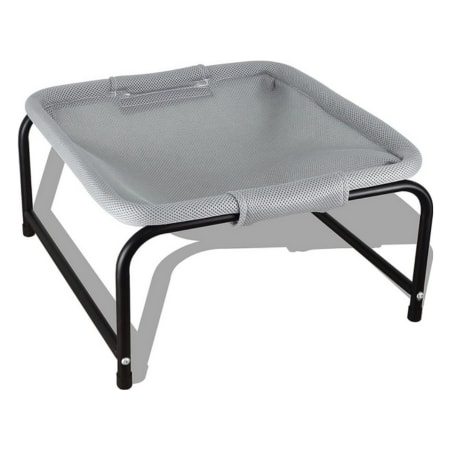
Self-Warming Beds
Unlike electric heated cat beds, self-warming beds are made with a layer of material that reflects the cat’s body heat back to them, providing gentle warmth for your pet without the danger of electric components.
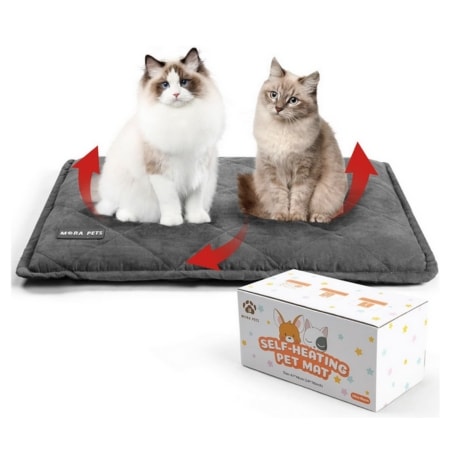
Since you don’t need to plug the bed into a mains socket, self-heating beds or mats can be placed anywhere in your home.
Convertible Beds
These are versatile cat beds that you can adjust or convert into different shapes or styles. For example, a bed that can be both an open cushion and an enclosed cave.
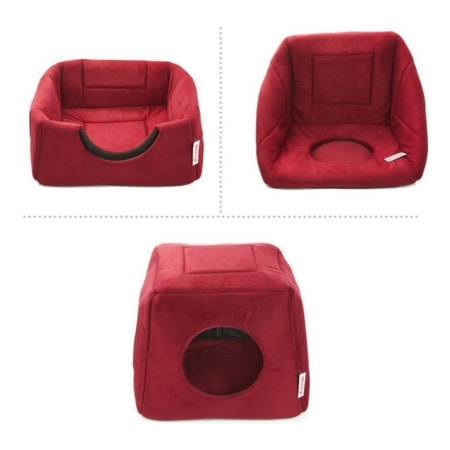
Travel Beds
As the name suggests, travel beds are designed to be portable so are easy to fold for transport. These beds are ideal for cats that travel regularly with their owners, providing a familiar resting spot in unfamiliar environments.
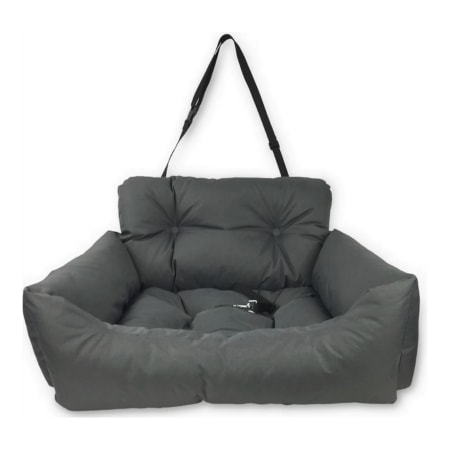
Tunnel Beds
Tunnel beds are tube-shaped beds that your cat can crawl inside, working well as play areas and a private sleeping spot.
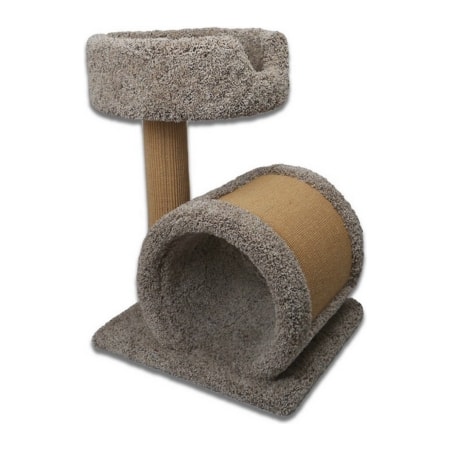
How Do You Make Your Own Cat Bed?
Of course, if you’re on a budget or you love to upcycle, you might fancy creating a DIY cat bed for your pet.
Here’s a step-by-step guide explaining how to make a cat bed.
What You’ll Need
- Fabric – Choose soft, durable fabric, such as fleece, cotton, flannel, or some other cat-friendly material.
- Filling material – Polyester fiberfill is a good choice, but you could use old pillows or foam instead.
- Sewing machine – If you have a sewing machine, that makes the project quicker and easier. However, you can make a DIY cat bed by hand, provided you can sew and have plenty of spare time.
- Thread to match the fabric you chose.
- Scissors
- Measuring tape
- Optional decorations, such as ribbons.
How To Do It:
Gather together everything you’ll need and choose a large, flat table to work on.
Step 1 – Measure and cut the fabric
Work out what size bed you want to make. Most standard cat beds are typically around 18 to 20 inches in diameter.
Allow a few inches to the measurements for seam allowance.
Cut out two identical circles or ovals of fabric for the top and bottom of the bed.
Step 2 – Stitch the sides
Cut a strip of fabric to form the sides of the bed. The width of this strip should be the desired height of the bed plus seam allowances.
Sew the strip into a loop, leaving one end open so you can add the stuffing.
Step 3 – Attach the top and bottom
Pin one of the fabric circles to the open end of the strip you just created, keeping the right sides of the fabric facing each other.
Stitch the circle to the strip using a straight stitch, leaving a small opening for the stuffing.
Step 4 – Stuff the bed
Now, turn the bed right side out through the opening you left.
Stuff the bed using the filling material you chose until the whole thing is as plump and firm as you want.
Step 5 – Close the opening
Once you’ve stuffed the bed, carefully hand-sew the opening closed using a slip stich or hidden stitch.
Step 6 – Add decorations
If you want to add decorations to your cat’s bed, like ribbons, stitch them to the bed’s exterior.
Step 7 – Wash the bed
If you chose a machine-washable fabric, it’s a good idea to wash the bed to get rid of loose fluff and odors. Air-dry the bed thoroughly before presenting it to your cat.
How Do You Get A Cat To Sleep In Its Bed?
To get your cat to sleep on her bed takes time and patience, but it can be done!
Here are our top tips on how to train a cat to sleep on its bed!
Choose The Right Bed
First, be sure to choose the right bed for your cat. That might take some trial and error and a few false starts before you find the style of bed your cat prefers.
If your cat has come from a rescue or shelter, it’s a good idea to ask the staff what kind of bed she had there and buy something similar. In addition, it’s worth asking if you can have a blanket with your cat’s scent on it to help her acclimate to her bed in her new home.
Location
Pick a good place to locate your cat’s new bed. That should be somewhere warm, out of drafts, and in a spot where your cat won’t be disturbed by kids or other pets when she wants some privacy to nap.
It can work well to put the bed close to a spot where your cat habitually naps.
Gradual Introduction
Don’t be in too much of a rush to get your cat into her new bed if she seems a bit reluctant at first. Allow your cat to investigate her new bed and tempt her into it by scattering some catnip or a few treats onto the bed and perhaps put a couple of your pet’s favorite toys in there to entice her.
Scent Familiarity
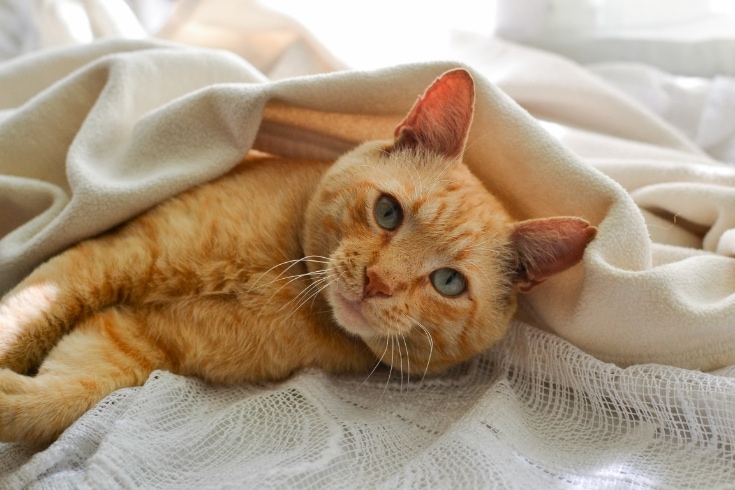
Use a few toys or a blanket carrying your cat’s scent to transfer her smell onto the new bed. That will make it clear to your pet that the new bed is hers to claim and enjoy.
Positive Association
You must create a positive association for your cat with her new bed by offering treats when she uses it and giving her lots of verbal praise.
Feeding On The Bed
If your cat is reluctant to go onto her new bed, feeding her on it can help. Even offering a few of your furry friend’s favorite, high-value treats can work wonders in tempting her to use her new napping spot.
Use Cat-Friendly Bedding
Cats love to feel warm and comfy, so always use cat-friendly bedding, like fleece, faux fur, flannel, and felt, and steer clear of anything hard, cold, or that makes a rustling sound when the cat steps onto it.
Be Patient
Don’t get frustrated if your cat doesn’t immediately use her new bed. Be patient and prepared to wait. As I said earlier, it once took my cat almost a year to start using her gorgeous, very expensive new cat bed!
Reward And Praise
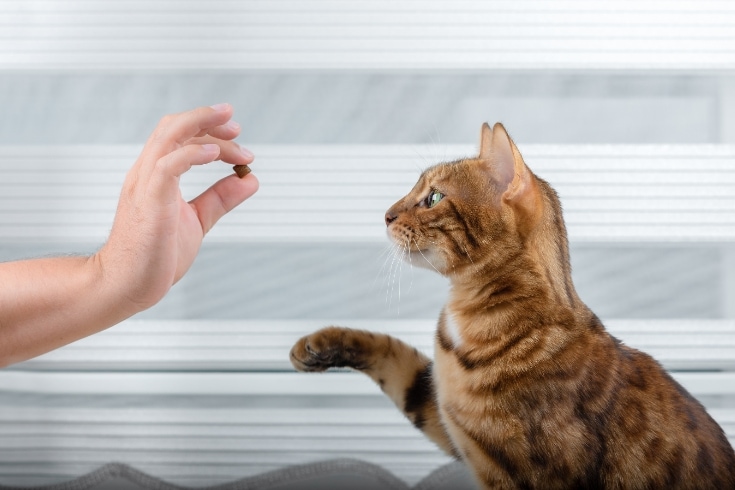
Whenever your cat uses her new bed, it’s extremely important to reward and praise her, helping to create a positive experience your cat will remember. That way, your pet will be more likely to continue using her bed in the future.
Avoid Forcing
Don’t try to force your cat onto or into the bed!
Cats are independent creatures, and you want your cat to start using the bed because she wants to. Picking your cat up and putting her into the bed won’t work, in fact, she’s more likely to run away and hide than settle down for a nap!
Instead, give your cat all the time and space she needs to acclimate herself to her new bed and start using it of her own accord.
Consistency
As with any kind of training, always be consistent in your approach and make sure your family are, too. Consistency is essential in any form of training to avoid confusing your cat. Keep all your verbal commands and cues the same, be patient with your pussycat, and allow plenty of time for the penny to drop.
FAQs
In this part of our guide, we answer some of the most frequently asked questions about how to get a cat to sleep in its bed.
Is It Normal For Cats To Prefer Human Beds Over Their Own?
Absolutely! Many cats prefer human beds over their own.
But why? So, your bed tends to be softer, larger, and warmer than a standard cat bed, especially if you’ve recently slept in it. Also, cats love being close to their owners, and your scent comforts them, making your bed an attractive resting place.
Of course, that’s not a reflection of the quality of your pampered pet’s cat bed but rather her instinctual behaviors and desire for comfort.
What Type Of Bedding Do Cats Find Most Comfortable?
Cats usually like soft, plush bedding, such as fleece, faux fur, or fluffy brushed cotton. Beds with raised edges or donut-shaped ones are particularly popular since they give your cat a sense of security. Cats love to curl up and sleep, so beds that give them a nestled feeling and contour to their shape also go down well.
Remember, each cat is an individual, and it might take some trial and error to find the perfect bed for your furry friend.
Can I Place The Cat Bed Near A Sunny Spot?
Yes, placing your cat’s bed near a sunny spot can be a great idea. Every cat owner knows that felines love basking in the sun’s natural warmth, so a warm, sunny place to relax in is very inviting. One of my cats loves to sleep on an armchair in my conservatory on sunny days. Sometimes the temperature hits 75o F in there, but he’s quite happy and refuses to come out!
However, heatstroke is a very dangerous, potentially fatal condition in cats, so you must ensure your cat has shade to retreat to if she gets too warm and provide plenty of clean, fresh water.
Are Heated Beds Safe For Cats?
Yes, a heated bed can be safe for your cat, provided you use it correctly.
Always use a heated bed that’s specifically designed for cats, and follow the manufacturer’s instructions to the letter. Pick a bed with chew-resistant cords, an auto shut-off feature, and adjustable temperature settings, and remember to check the bed regularly for wear and tear. Never leave your cat unattended on the bed while it’s switched on for long periods.
Should I Consider A Specific Type Of Bed For My Senior Cat?
Yes, it’s essential to consider using a bed that supports an elderly cat’s joints, such as a memory foam or orthopedic bed, which can offer your pet relief from the debilitating pain of arthritis. In addition, a raised bed can be easier for older cats to get in and out of.
How Often Should I Wash My Cat’s Bed?
I usually wash my cats’ beds every two to four weeks. However, if a cat vomits on the bed, I wash it immediately. Of course, if you have a cat that sheds a lot, you might want to wash her bed more frequently.
Regular washing gets rid of dirt, dander, and allergens, keeping the environment hygienic for your family and your kitty. When washing your cat’s bedding, always follow the care instructions to the letter so the bed doesn’t shrink. In addition, you should air-dry animal bedding rather than putting it in a tumble dryer, which could damage the material.
What If My Cat Has Never Used A Bed Before?
If your cat isn’t used to having a bed, introduce it slowly. Put a few of your pet’s favorite toys or an item of your clothing in the bed to make it more attractive to your cat, and try putting the bed in a spot where your cat often takes naps.
Be patient, as it could take time for your cat to use her new bed. I once bought a new cat bed that took the better part of a year before my pet slept in it, so don’t give up hope!
Can I Train My Cat To Use A Bed If It’s Older?
Yes, you can train older cats to use a bed. Although an older cat might be set in her ways, using positive reinforcement, such as treats and praise, can encourage her to use her bed. You might also find placing familiar scents, such as her toys or a soft blanket in the bed can make it more inviting.
Remember to allow your cat time to adjust, especially if she’s recently come from a shelter or rescue.
Are There Any Natural Remedies To Help My Cat Relax In Its Bed?
Yes! A sprinkling of catnip can be a handy natural remedy that’s great for enticing a reluctant cat into her bed.
Alternatively, you could use a pheromone calming spray or a plug-in diffuser. These products mimic the natural territory markers cats use and can help your pet feel safe and relaxed in her new resting spot.
Conclusion
Cats need between 12 and 16 hours of sleep every day to regenerate their body cells, helping to keep the cat healthy and disease at bay. If your cat doesn’t get the sleep she needs, she will become stressed, which could cause health issues and behavioral problems.
For your cat to enjoy plenty of good quality naps, she needs a warm, cozy bed to snooze in. Cat beds come in many different shapes and styles, including igloo beds for cats that love to hide and orthopedic mattresses to provide the extra joint and muscle support older cats need. Always buy a high-quality cat bed made from durable, machine-washable material in a style that suits your cat’s needs.
If you’re into crafting, you might prefer to make your own cat bed, following the instructions given in this guide.
To persuade your cat to use her new bed, place it somewhere out of drafts and direct sunlight, use a toy to add your pet’s scent to the bed, and try sprinkling catnip and treats over the bed to entice your cat.
Don’t panic if your furry friend spurns your gift at first! It can take weeks or even months for a cat to accept a new bed and start using it, so be patient, and give your pet all the time she needs.